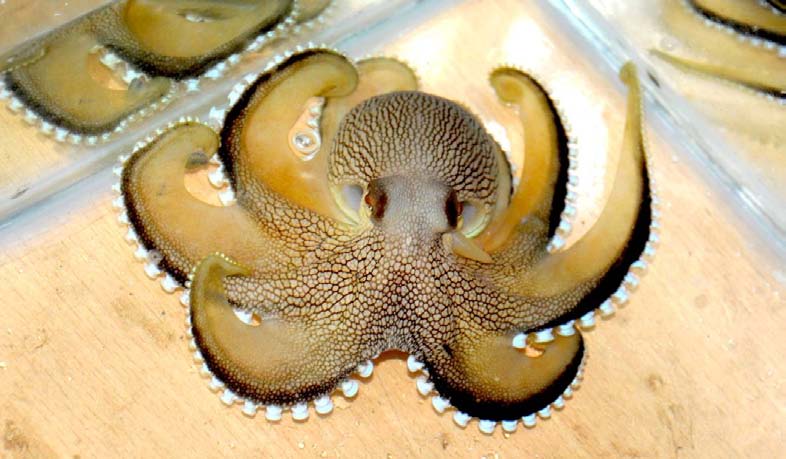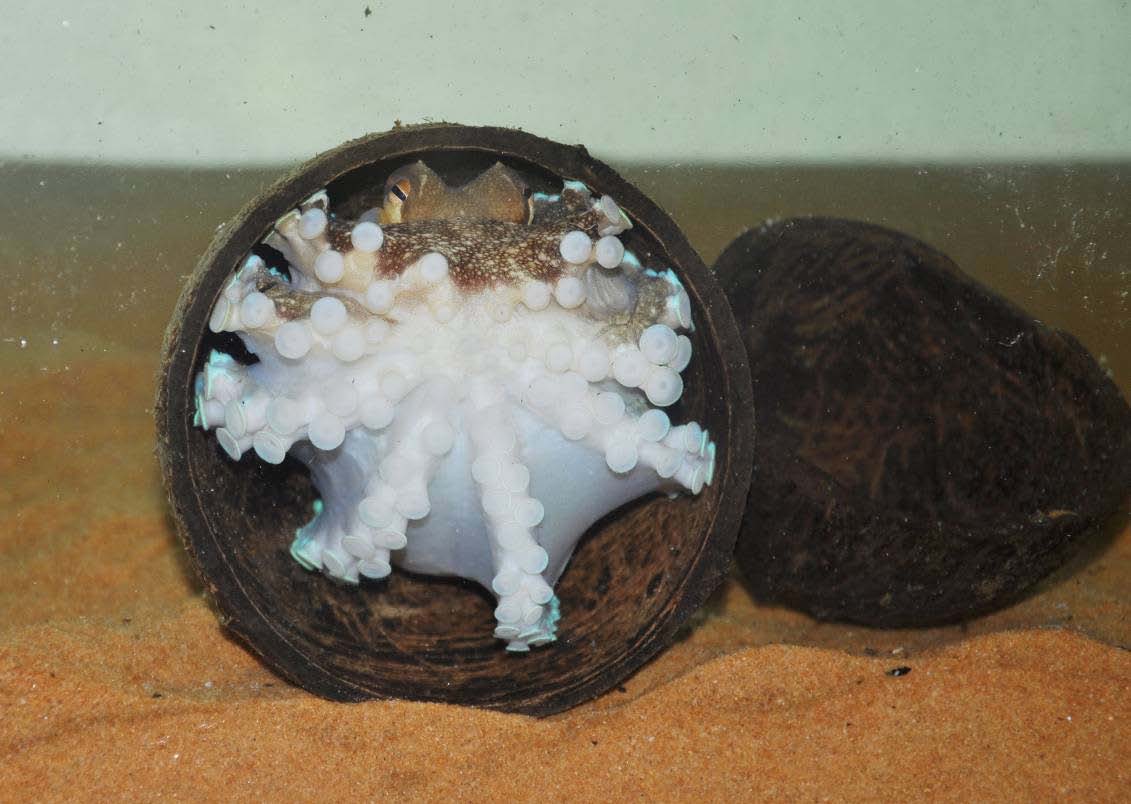Interactions
As most octopi, including the Veined Octopi, live their entire
lives in solitude, interactions with other creatures are quite
minimal. However, in order to survive they must hunt for food,
along with avoid being the hunted; they do this in multiple ways.
The Amphioctopus marginatus
is one of the only
invertebrates that display using a tool, such as the coconut shell, to
display a form of crypsis (Huffard et al. 2005). Crypsis is a
primary defense mechanism used by the veined octopus to evade
predation, by using the coconut shell to create the image that they
are just a coconut on the ocean floor (Huffard
2006).
Octopi, even though they are deceiving, are on constant watch for
predators. Adult octopuses are preyed upon mainly by many species of
sharks including the
Great White Shark, the
Bull Shark, along with eels (EOL 2013). However, there is a critical developmental
stage in an octopus’s life span which they are predated on heavily.
As discussed on the reproduction page, after hatching from their
eggs, young octopuses are considered planktonic organisms as they
float around the ocean currents in large schools. These planktonic
young often fall victims to a whales diet, as whales feed primarily
on large schools of planktonic creatures, along with many other fish
that feed primarily on plankton
The Amphioctopus marginatus is not at the bottom of the food chain however. The Veined Octopus primarily feeds on shrimp, crabs, along with clams (EOL 2013). In general these octopi emerge from their shelter at dawn and dusk to search for prey. The most common form of finding food, is foraging the sea floor. The octopi will use their long tentacles to reach into holes in the mud to search for prey. Another way they will hunt for prey is to completely cover their body in sand or mud on the ocean floor, except their eyes, and wait for unexpecting prey to swim by, then the octopus attacks(EOL 2013). This strategy requires little investment of energy and in return gain a source of energy . Another rather unique way these octopi catch prey is a beneficial effect of the coconut shell they often carry. Prey of the Veined Octopus often fall for the false image the octopui has portrayed itself as; shrimp and crabs will often wander into the octopuses’ coconut shelters, thinking it is uninhabited, but end up being an easy meal for the octopus. Not only is the crypsis they display used as a defense, but it oddly is used to attract prey as well (EOL 2013).
Visit our habitat page to see where all these organisms live or to see interactions between the Coconut Octopus visit our reproduction page or click here to return to the home page.

